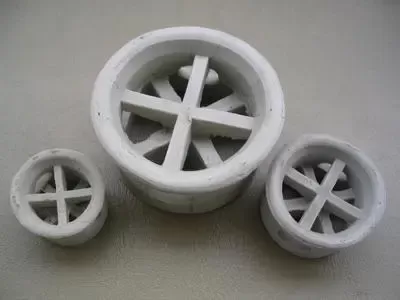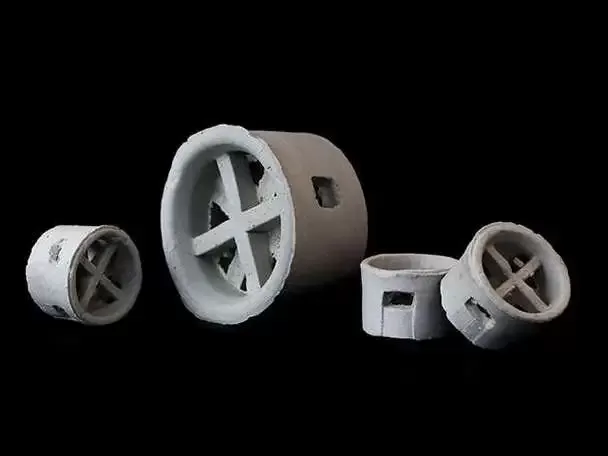The ceramic cascade ring incorporates the characteristics of the Raschig ring and improves upon the Pall ring. The height-to-diameter ratio of the ring is 1:2, and a conical flange is added at one end, reducing the resistance of gas passing through the bed and increasing the flux. The packing strength is high. Due to its structural characteristics, the gas and liquid distribution is uniform, increasing the contact area between gas and liquid and improving the mass transfer efficiency. The ceramic cascade ring also changes the habit of the Raschig ring packing where the ring height is equal to the diameter. The height of the ring is reduced, the thickness of the material is thinned, and a flange is added at one end of the ceramic cascade ring.

Because the side end of the ceramic cascade ring is flanged, not only can the mechanical strength of the packing ring be increased, but also because the symmetry of the packing structure is disrupted, the probability of directional placement during the filling process is increased. Moreover, due to the influence of the flange, the contact between the gaps of the packing rings during stacking changes from linear contact to point contact. This not only increases the voids between the packing particles, reduces the resistance of gas passing through the packing layer, but also these contact points can be the convergence and dispersion points for the liquid to flow along the packing surface, thereby promoting the surface renewal of the liquid film and facilitating the improvement of the packing mass transfer efficiency.

| Name | Normal | Diameter×Height×Thickness | Surface area | Void space | Bulk density | No.elements | Packing factor |
| mm | mm | m2/m3 | % | kg/m3 | per/m3 | m-1 | |
| Ceramic Cascade Ring | Φ25 | 25×15×3 | 210 | 73 | 650 | 72000 | 540 |
| Φ38 | 38×23×4 | 153 | 74 | 630 | 21600 | 378 | |
| Φ50 | 50×30×5 | 102 | 76 | 580 | 9100 | 232 | |
| Φ76 | 76×46×9 | 75 | 78 | 530 | 2500 | 158 |


.png)
.png)
.png)
.png)
.jpg)
.png)